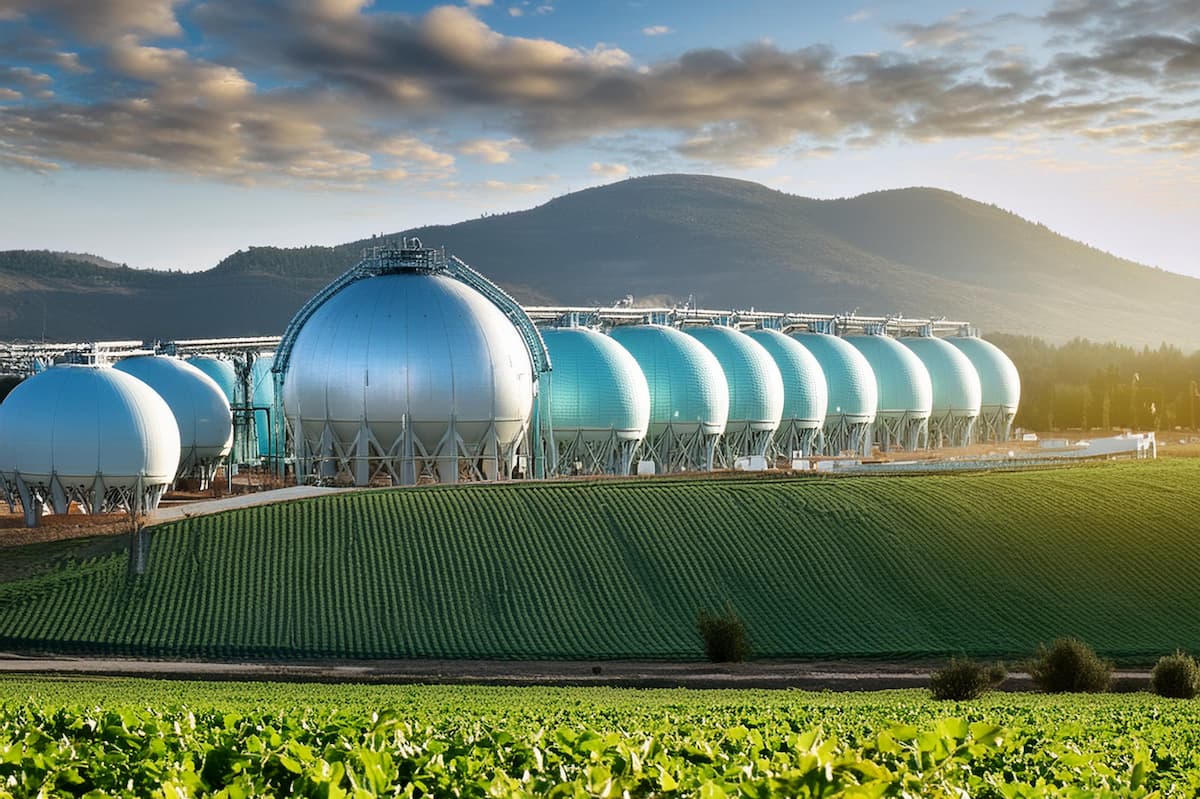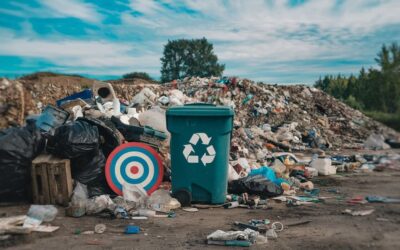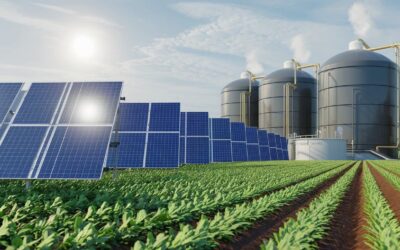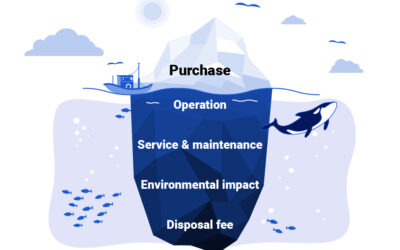Biogas plants represent an innovative and sustainable solution for the production of clean energy. Thanks to advanced technology and the reuse of organic and agricultural waste, these plants offer an ecological alternative to traditional energy production, significantly contributing to reducing the carbon footprint and promoting a circular economy. In this article, we will explore the biogas production process, its environmental and economic benefits, and the future prospects of the sector.
Key points
- Innovative technology, such as that of Tecnofer, allows food and agricultural waste to be transformed into biogas, a clean and economical source of energy.
- Biogas can be used both for the production of thermal and electrical energy and converted into biomethane, expanding its applications in the renewable sector.
- Biogas plants contribute to the energy autonomy of companies, allowing the sale of the energy produced and the use of residues as an agricultural resource.
- The SynBioS project in Bologna represents an example of innovation in the sector, with the conversion of renewable electricity into biomethane through “Power to Gas” technology.
- The future of biogas includes exploring the use of hydrogen as an energy alternative, opening new frontiers for clean and sustainable energy production.
Biogas production: an innovative process

How is energy created from waste?
Creating energy from waste represents an innovative and sustainable process, which uses advanced technology to transform food and organic waste into a renewable energy source. Thanks to Tecnofer technology , it is possible to recover the food component from packaged products, such as bottled drinks and vegetables in plastic containers, and valorise it through reuse in anaerobic digestion systems for the production of biogas.
The production of biogas from organic waste not only contributes to waste reduction, but also represents a source of clean and renewable energy, in line with the principles of the circular economy.
The anaerobic digestion process allows waste to be transformed into biogas through a series of biological reactions, in which microorganisms decompose organic matter in the absence of oxygen. This process not only generates energy, but also avoids the production of further non-inert waste, thus supporting a completely sustainable approach to waste management.
Tecnofer technology and the transformation of food waste
Tecnofer technology represents a fundamental pillar in the process of transforming food waste into clean energy. Thanks to its depackaging system, Tecnofer is able to recover the food component from packaged products, such as bottled drinks or vegetables in plastic containers, and valorise it through reuse in anaerobic digestion systems for the production of biogas.
The extracted organic component is then processed by microorganisms in large digesters, where, during decomposition, biogas is released. This process not only contributes to the production of clean energy, but also promotes a circular economy model, transforming waste into a resource.
Tecnofer is upstream in the process of creating clean energy, providing the essential raw material for biogas plants.
The benefits brought by Tecnofer solutions include:
- Reduction of production costs
- Reduction of carbon footprint
- Development of a sustainable production cycle
Environmental and economic benefits of biogas production
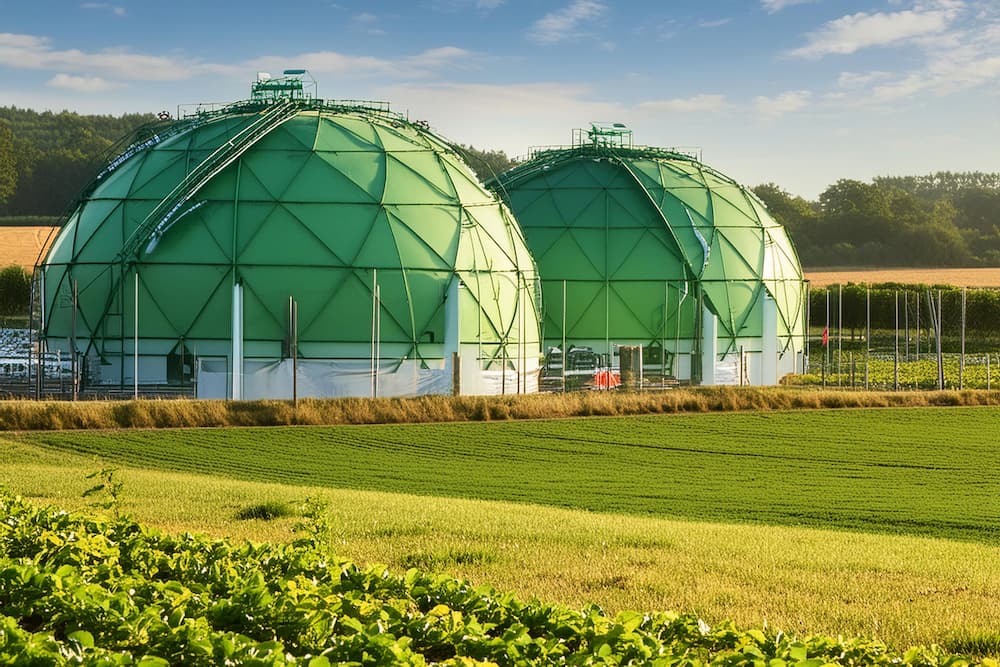
Biogas production not only represents a renewable and clean energy source, but also offers significant economic and environmental benefits. The transformation of waste into energy reduces dependence on fossil fuels, contributing to the fight against climate change. Furthermore, the anaerobic digestion process minimizes the emission of greenhouse gases, making biogas an ecologically sustainable solution.
The economic benefits are equally significant. The installation of biogas systems can turn into a profitable investment thanks to the very advantageous all-inclusive tariffs for the sale of the energy produced. This not only guarantees an economic return for investors but also promotes the energy independence of companies that decide to reuse the energy produced for internal use.
The valorisation of organic waste through the production of biogas represents a unique opportunity to combine environmental sustainability and economic efficiency.
- Reduction of dependence on fossil fuels
- Minimization of greenhouse gas emissions
- Economic return from investment in biogas plants
- Promotion of energy independence of companies
From biomethane to thermal and electrical energy
The role of biogas in cogeneration
Biogas cogeneration represents an innovative and sustainable solution for the combined production of electrical and thermal energy. Through the use of cogeneration systems , it is possible to transform biogas, obtained from the anaerobic fermentation of biomass and organic waste, into two useful and complementary forms of energy. This process not only ensures an efficient energy supply but also contributes to the reduction of greenhouse gas emissions.
Biogas cogeneration allows the production of renewable electrical and thermal energy starting from organic materials of different nature.
Cogeneration offers several advantages, including:
- Reduction of energy costs
- Minimization of environmental impact
- Increase in energy efficiency
These benefits make biogas cogeneration a preferred choice for many companies and communities aiming for sustainable energy independence.
The conversion of biogas into biomethane: technologies and advantages
The conversion of biogas into biomethane represents a crucial step in the process of valorising organic waste. Through the use of advanced upgrading technologies , it is possible to transform biogas, rich in methane, into biomethane, a clean fuel that can be used in several sectors, including electricity production, heating and transport.
The biomethane obtained can be injected directly into natural gas distribution networks, making it a sustainable and easily accessible energy option.
Conversion technologies offer numerous benefits, including:
- Optimal energy efficiency
- Reduction of greenhouse gas emissions
- Stimulation for energy sovereignty
- Valorization of organic waste as a precious resource
These benefits underline the importance of the conversion of biogas into biomethane as a lever for the energy transition towards cleaner and renewable sources.
The importance of biomethane for clean and renewable energy
Biomethane represents a highly valuable energy solution in the context of the transition towards more sustainable energy sources. Its production from organic waste makes it an excellent example of circular economy, significantly contributing to the reduction of greenhouse gas emissions.
Biomethane, obtained from the fermentation of waste of organic origin, stands out for its renewable nature and positive impact on the environment.
The conversion of biogas into biomethane, although it may present some challenges in terms of costs and efficiency, paves the way for a wider use of this resource in various energy applications, from electricity production to heating and transport. Investment in innovative technologies for biogas upgrading is essential to maximize the environmental and economic benefits of biomethane.
The impact of biogas on energy independence
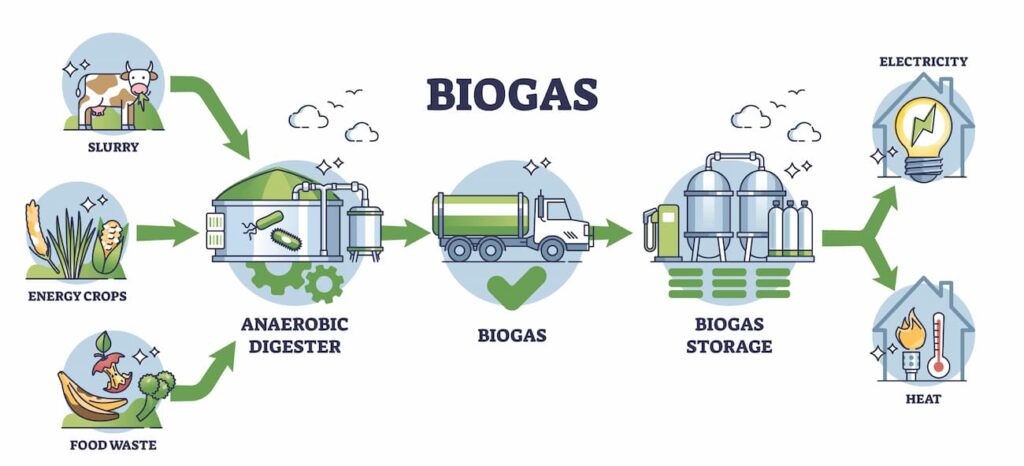
Reuse of biogas for energy independence
The reuse of biogas for energy independence represents a strategic choice for agricultural and livestock companies. Through the adoption of this practice, it is possible to transform the by-products of agricultural activity into a precious resource, ensuring a constant energy supply and reducing dependence on external energy sources. The conversion of wastewater into thermal and electrical energy, using cogeneration systems, allows us to optimize the use of available resources.
The sale of the energy produced represents a non-negligible profit opportunity, offering advantageous tariffs that transform the biogas plant into a profitable investment.
There are many options available for using biogas:
- Reuse for internal use for energy autonomy.
- Sale of the energy produced to network operators.
- Conversion to biomethane for use as a decarbonised fuel.
Each choice entails specific benefits, both in environmental and economic terms, making biogas a versatile and sustainable solution for the energy future.
Sale of the energy produced: a profitable investment
Deciding to sell the energy produced by your biogas plant can turn into an extremely advantageous option. The sale of energy not only ensures a constant revenue stream , but also helps promote the use of renewable energy, strengthening the commitment to a more sustainable future.
The choice to sell the energy produced brings several benefits:
- Generating passive income
- Contribution to the national energy network with clean energy
- Recognition as an active player in the energy transition
The decision to invest in a biogas plant and sell the energy produced represents an important step towards energy autonomy and environmental sustainability.
The sale of energy can take place in various ways, including direct sales to network operators or through incentive mechanisms. It is essential to inform yourself about the options available and potential incentives to maximize the economic benefits of the investment.
The resulting material as an agricultural resource
The transformation of organic waste into biogas not only contributes to the production of clean energy, but also generates waste materials that represent a precious resource for agriculture. Digestate , the final product of the anaerobic digestion process, proves to be an excellent natural soil improver, capable of enriching agricultural land with essential nutrients.
The digestate, free of pollutants and rich in nutrients, improves the quality of the soil and promotes greater agricultural productivity.
Here are some of the main benefits of reusing digestate in agriculture:
- Improvement of soil structure
- Increased fertility
- Reduction in the use of chemical fertilizers
- Contribution to environmental sustainability
This approach not only valorises the by-products of the biogas production process, but also helps create a virtuous cycle that links clean energy to sustainable agriculture.
Innovations in the biogas sector: the SynBioS case
The SynBioS project in Bologna
In Bologna, the SynBioS project is being implemented, an internationally cutting-edge solution for the production of biomethane. This plant represents a significant step towards decarbonization , converting renewable electricity into synthetic natural gas. The objective is clear: to win the challenge of decarbonisation using innovative technologies.
SynBioS is a plant that will produce biomethane from wastewater and help store renewable energy.
The project is part of a broader context of research and development for clean energy, with particular attention to hydrogen for civil use. The possibility of converting electricity into synthetic natural gas opens new perspectives for the use of renewable sources and energy independence.
From the production of renewable electricity to biomethane
The transition from renewable electricity production to biomethane represents a crucial step on the path towards a more sustainable and circular economy. Biomethane, obtained through biogas upgrading processes , is a versatile energy solution, capable of powering not only electricity production, but also heating and transport.
The production of biomethane from renewable sources, such as wastewater and organic waste, highlights the importance of transforming waste into valuable resources.
The use of biomethane in the national energy sector highlights its ability to effectively respond to energy needs, while promoting decarbonisation and energy efficiency. The following table summarizes the main uses of biomethane:
| Use of biomethane | Application sector |
|---|---|
| Electricity production | Industrial |
| Heating | Residential |
| Transport | Sustainable mobility |
This process not only contributes to the reduction of greenhouse gas emissions, but also opens new perspectives for the circular economy, valorising materials that would otherwise be considered waste.
“Power to Gas” technology and decarbonisation
Power to Gas technology represents an innovative solution to address the challenge of decarbonization, converting renewable electricity into synthetic natural gas. This process not only contributes to the reduction of CO2 emissions, but also efficiently integrates electricity and gas networks, improving the sustainability of the national energy system.
Decarbonization is a fundamental goal for the sustainable energy future. Power to Gas technology plays a key role in this context, allowing the conversion of surplus electricity into a storable and transportable form such as gas.
The construction of Power to Gas plants, such as the SynBioS project in Bologna, highlights the commitment towards a circular economy and a clean energy transition. These plants are capable of producing 100% renewable natural gas from sources such as organic waste and agri-food waste, significantly contributing to the reduction of the carbon footprint.
The future of biogas: hydrogen and new frontiers

Hydrogen as an alternative in the energy sector
The introduction of hydrogen into the energy sector represents a significant turning point towards a more sustainable future. Hydrogen, in fact, is not an energy source but a carrier , capable of storing and transporting energy efficiently and without producing CO₂ emissions. This characteristic makes it particularly suitable as a ‘bridge’ towards the world of renewable energy.
Hydrogen can be produced through processes that use renewable sources, such as solar or wind energy, making it a key element in the energy transition.
The experimentation in Castelfranco Emilia, which involved around thirty families, demonstrates the feasibility of using hydrogen for civil purposes. This pioneering project paves the way for innovative solutions for the use of green gas in energy communities, highlighting how hydrogen can effectively contribute to the energy autonomy of communities.
The potential of hydrogen for civil use
The introduction of hydrogen in the civil sector represents a significant turning point for energy sustainability. The experience of Castelfranco Emilia , with its unique national experimentation in Italy, demonstrates how hydrogen can be effectively integrated into communities, offering innovative solutions for the use of green gas. This project involved around thirty families, exploring the potential of green hydrogen in the home.
Hydrogen, thanks to its versatility, can be used in different ways in the civil sector, from the production of electricity to heating, up to sustainable mobility.
The adoption of hydrogen for civil use not only contributes to the reduction of CO2 emissions, but also opens the way to new forms of energy autonomy. Energy communities, like those tested in Castelfranco Emilia, can produce and manage their own energy independently, creating a sustainable and replicable model.
Challenges and opportunities for the integration of hydrogen in the biogas sector
The integration of hydrogen in the biogas sector represents an innovative frontier, capable of revolutionizing the current energy landscape. The transition to a low-carbon economy is a challenge that requires innovative and sustainable solutions. Hydrogen, thanks to its versatility and ability to be produced through electrolysis processes powered by renewable sources, is positioned as an ideal candidate for this change.
The adoption of hydrogen in the biogas sector can significantly contribute to the decarbonisation of energy, while offering new business opportunities.
However, the road to hydrogen integration presents several challenges:
- Regulations and regulations : adaptation to current regulations and anticipation of future safety standards.
- Storage and transportation technologies : development of efficient solutions for hydrogen management.
- Production costs : cost reduction through technological innovation and process optimization.
Despite these challenges, the opportunities offered by the integration of hydrogen in the biogas sector are varied and promising. The ability to generate clean and renewable energy, together with the possibility of creating new markets and stimulating the green economy, make this transition not only necessary but also advantageous.
Reflections

Summary of the benefits of biogas
Biogas represents an innovative and sustainable energy solution, capable of transforming waste and biomass into a precious source of energy. Biogas production contributes significantly to the reduction of CO2 emissions , promoting a circular economy and reducing dependence on non-renewable energy sources.
Thanks to advanced technology, such as that of BioBANG®, it is possible to improve the performance of biogas production, transforming products considered waste into low-cost raw materials to produce clean energy.
The sale of the energy produced represents a profitable investment, offering very advantageous all-inclusive tariffs. Furthermore, the resulting material can be used as a fertilizer with high fertilizing power, further contributing to environmental sustainability.
Future prospects for the production of clean energy
The future prospects for the production of clean energy through biogas are extremely promising. Technological innovation and the adoption of sustainable practices are fundamental to increasing the efficiency and effectiveness of these energy systems. The transition towards a circular economy, where every waste becomes a resource, is already underway and is expected to accelerate in the coming years.
The production of biomethane from wastewater represents a concrete example of how problematic waste can be transformed into renewable sources of energy.
Some of the main areas of development include:
- The optimization of biogas production processes.
- The integration of advanced technologies for the conversion of biogas into biomethane.
- Expanding the use of biomethane as a clean alternative to fossil fuels.
- The development of efficient and sustainable energy systems based on cogeneration and “oil free” technology.
These developments will not only help reduce environmental impact, but will also offer new economic opportunities, promoting energy self-sufficiency and community resilience.
The key role of technology and innovation in the biogas sector
In the biogas sector, technology and innovation play a fundamental role. The adoption of advanced technologies is essential to optimize biogas production and transformation processes, making them more efficient and sustainable. This not only improves the quality and quantity of the biogas produced but also contributes to reducing the environmental impact of the plants.
The biogas and biomethane supply chain in Italy is experiencing a phase of growth and renewal, thanks to the introduction of innovative technologies that make the production of renewable energy and natural organic matter possible.
Investment in research and development is crucial to the progress of the sector. Below are some of the main areas of innovation:
- Improvement of anaerobic digestion processes
- Development of technologies for biogas purification
- Optimization of cogeneration systems
- Introduction of solutions for the conversion of biogas into biomethane
These developments not only increase energy efficiency but also open up new possibilities for the use of biogas, significantly contributing to the transition to a low-carbon economy.
Conclusion
Biogas plants represent an innovative and sustainable solution for the production of clean energy, which fits perfectly into the current context of energy transition towards renewable sources. Advanced technology, such as that proposed by Tecnofer, allows waste and scrap to be effectively transformed into a precious resource, significantly contributing to the reduction of the carbon footprint and the promotion of a circular economy. These plants not only offer a concrete response to the growing demand for clean energy, but also open the way to new opportunities for sustainable development, demonstrating that it is possible to combine technological progress and respect for the environment. In conclusion, the adoption of biogas plants is a fundamental step towards a cleaner, more efficient and sustainable energy future.
Frequent questions
How is energy created from waste?
Thanks to the innovative Tecnofer technology, it is possible to transform food waste into a valid and economical source of energy.
What are the environmental and economic benefits of biogas production?
* Reduction of production costs * Reduction of the carbon footprint * Development of a sustainable production cycle * Transformation of the residue into a resource, with a view to the circular economy
How is biogas converted into biomethane?
The biogas is concentrated through dedicated equipment, subtracting all the other gases with the exception of methane, with the aim of obtaining a mixture with a 97% methane concentration through different technologies that lead to the elimination of Co2.
What are the possibilities for reusing biogas for energy independence?
* Reuse for internal use by opting for the energy autonomy model * Sell in whole or in part to network managers, taking advantage of very advantageous all-inclusive tariffs that transform the Biogas plant into a real investment
How does the “Power to Gas” technology used in the SynBioS project work?
“Power to Gas” technology allows you to convert renewable electricity into synthetic natural gas, representing a cutting-edge solution to meet the challenge of decarbonisation.
Is the use of hydrogen possible in the biogas sector?
Yes, hydrogen represents a promising alternative in the energy sector, with potential for use also at a civil level, opening new frontiers for the integration of hydrogen in the biogas sector.

